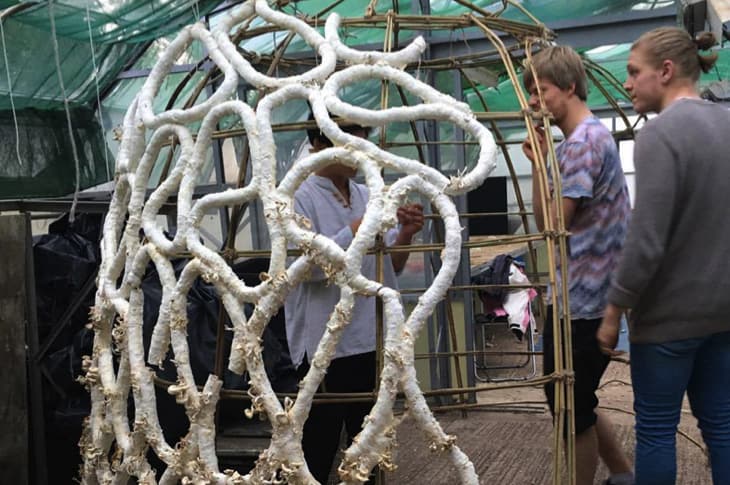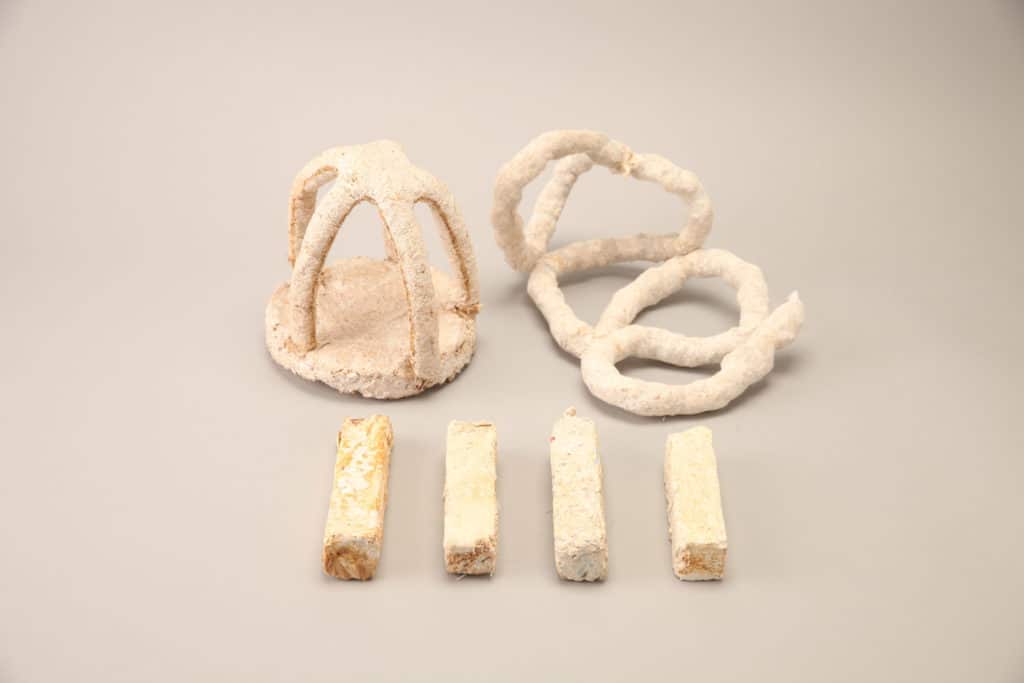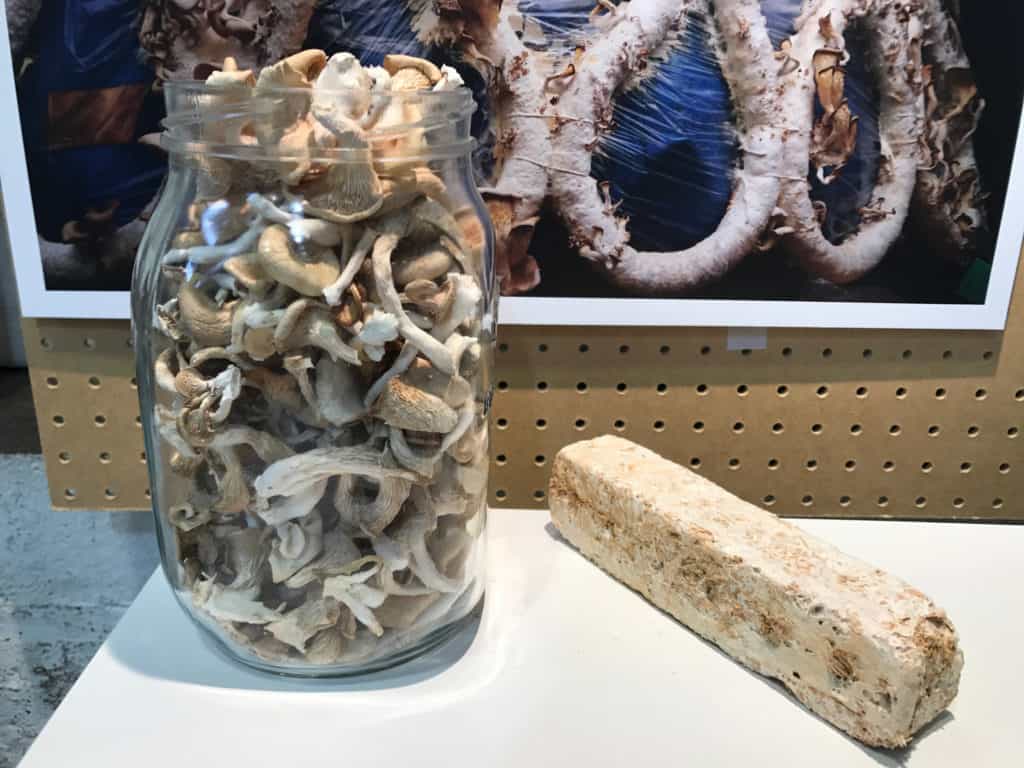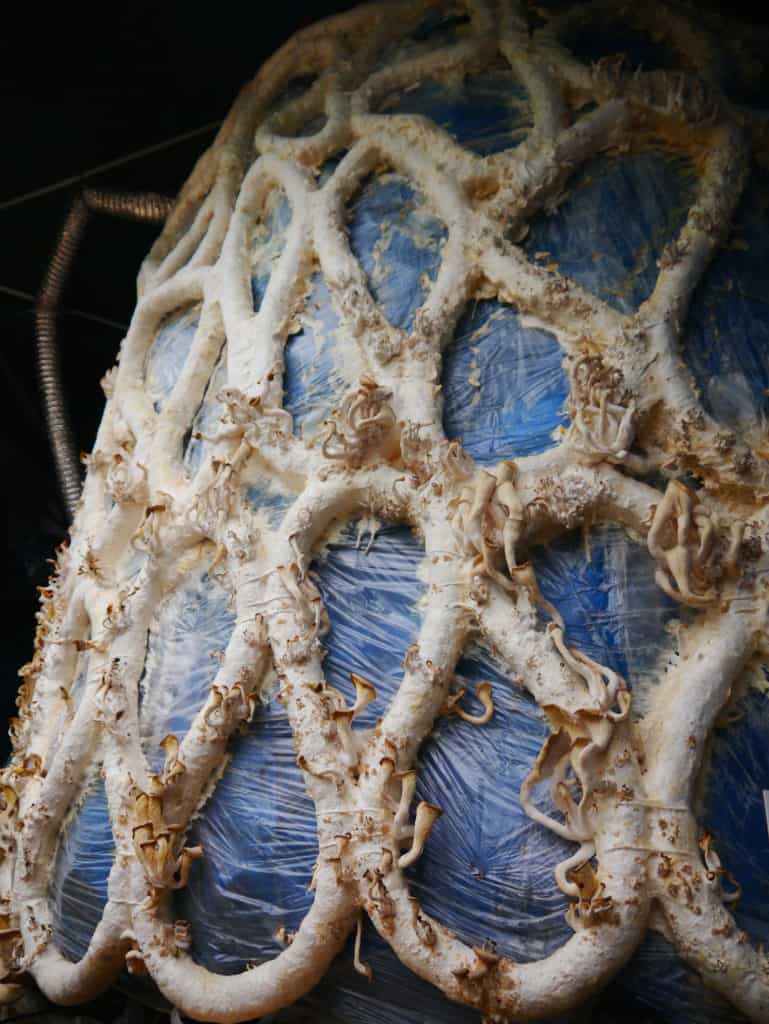
Mushrooms are often overlooked for their diverse uses outside of the kitchen, where they are already used for a variety of dishes and as a meat substitute, but creative minds around the world are starting to harness the power of these versatile fungi. Mushrooms can be used for medicine, fashion, insulation for homes, as a replacement for packing peanuts, and now, thanks to architecture student Aleksi Vesaluoma, they are being used as building materials.
Using mushrooms for a range of purposes is not only environmentally-friendly but also safer than other materials because it is heat and water-resistant, lightweight, and strong. Since there is a deficiency in eco-friendly building materials when it comes to architecture, Vesaluoma decided to explore the possibility of using this amazing, edible product to create structures.

The student said he was inspired to test out mushrooms because of the wasteful world we live in and the non-eco-sensitive way that architects tend to operate right now.
“Exploring the structural potentials of mycelium materials could help in shaping a future where architecture is grown from bottom-up rather than consuming resources and creating waste,” he said.
Vesaluoma mixed cardboard with mushroom mycelium, which is the part of the fungus that branches out with thread-like extensions, to mold what he calls “mushroom sausages.” The long sausages were then placed over a mold and left to grow over a four-week period inside of a greenhouse. Upon checking the strength of the structure after the month-long period of growing, the student said that the pieces were “bound together like glue.”

On top of being biodegradable and waste-free, you can also pick at the structure and eat the mushroom. When asked what type of structure this material could be used to make, Vesaluoma says that he envisioned it being used for a pop-up restaurant that serves mushroom-based meals or as a biodegradable, temporary building at a festival.
“Mycelium materials are beneficial to us and the environment as well as just being really cool. They’re another great example of why we need to trust the intelligence of nature in helping us create more regenerative systems of manufacture,” said Vesaluoma.
Since materials found in nature used to be the only items that humans could choose from for building, it makes sense that innovative architects would turn to the outdoors to find inspiration. The only obstacle that Vesaluoma foresees when thinking about using this material in the future is the public’s opinion, as mushrooms are often seen as a nuisance or sometimes even poisonous.

“Right now the main factors holding back the mass-commercialization of mycelium materials are people’s pre-assumptions, as well as the power of the profit-driven materials industry,” he said.
As it stands right now, the capitalistic structure of developed nations is what drives businesses to think of profit over the mission to save the planet, which would be reason enough for most firms to reject the idea of using mushrooms. However, there are plenty of small firms that are interested in new materials, even those made of mushrooms, and that’s who Vesaluoma hopes to market the product to.


